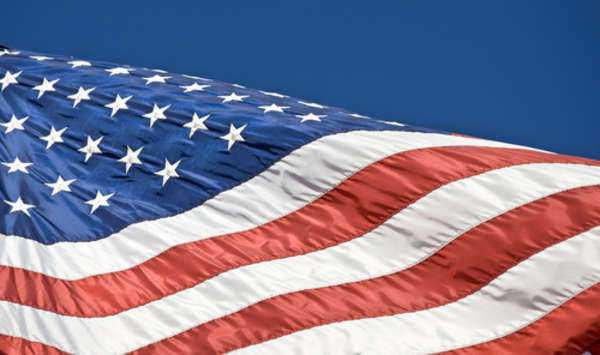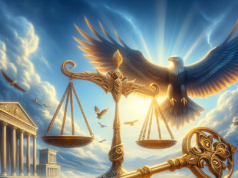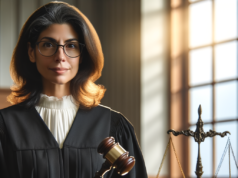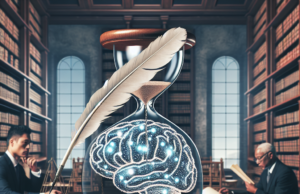Table of Contents

The 18th Amendment: Overview, Timeline of Cases, Decisions Simplified.
The 18th Amendment, ratified in 1919 and enacted in 1920, prohibited the manufacture, sale, and transportation of alcohol in the United States. This amendment, also known as Prohibition, had a significant impact on American society and influenced several major court decisions over time. In this article, we will explore the history of the 18th Amendment and its effects on American politics and legal judgments.
The 18th Amendment: A Brief History
The 18th Amendment was the culmination of several decades of efforts by temperance advocates to curtail the use of alcohol in the United States. Beginning in the mid-19th century, groups such as the Women’s Christian Temperance Union and the Anti-Saloon League organized campaigns to reduce alcohol consumption in American society. This movement gained momentum in the early 20th century, as the negative effects of alcohol on public health, crime rates, and family life became increasingly evident.
In 1917, Congress passed the National Prohibition Act, also known as the Volstead Act, which enforced the 18th Amendment by defining what constituted “intoxicating liquors” and providing guidelines for the distribution and sale of alcohol under Prohibition. The amendment technically went into effect on January 16, 1920, but enforcement of the law was difficult and often ineffective. The 18th Amendment was widely criticized for its failure to reduce alcohol consumption and was ultimately repealed by the 21st Amendment in 1933.
The 18th Amendment and Major Court Cases
The 18th Amendment had a significant impact on American legal history, particularly concerning its impact on individual rights, law enforcement, and federalism. Here’s a timeline of some of the most important court cases in which the 18th Amendment played a significant role:
1922 – Pierce v. Society of Sisters
In Pierce v. Society of Sisters, the Supreme Court ruled on a challenge to an Oregon law that required children to attend public school rather than private or parochial schools. The plaintiffs in the case argued that this law violated their constitutional rights to freedom of religion and education.
The Court ultimately ruled in favor of the plaintiffs, citing the 14th Amendment’s protections of individual liberty and freedom of choice. The Court noted that the Oregon law, which was intended to further the goals of Prohibition by limiting the influence of private schools that were favorable to alcohol use, was an unconstitutional restriction on individual rights.
1925 – Carroll v. United States
In Carroll v. United States, the Supreme Court considered the constitutionality of a search of an automobile by federal agents who suspected the vehicle was involved in the transportation of illegal alcohol. The plaintiffs argued that the search violated their 4th Amendment protection against unreasonable searches and seizures.
The Supreme Court, however, ruled that the search was constitutional, noting that the need to prevent the illegal transport of alcohol outweighed the individual rights of the defendants. This decision expanded the powers of law enforcement to search vehicles and other private property in the pursuit of Prohibition enforcement.
1928 – Lambert v. Yellowley
In Lambert v. Yellowley, the Supreme Court considered a challenge to a law that required individuals to register with the government if they intended to sell alcohol, even if they lived in a state where alcohol sales were legal. The plaintiff argued that this law violated their 5th Amendment protection against self-incrimination.
The Supreme Court ultimately ruled in favor of the plaintiff, noting that the law imposed an unconstitutional burden on those who wanted to engage in legal commerce. This decision affirmed the principle that in order to be constitutional, laws must be carefully crafted to balance the need to enforce Prohibition with the protection of individual rights.
1932 – United States v. Haas
In United States v. Haas, the Supreme Court considered a challenge to the National Prohibition Act, which provided for harsh penalties for those who violated the 18th Amendment. The plaintiff argued that the Act was unconstitutional because it created a presumption of guilt without allowing the defendant the opportunity to rebut that presumption.
The Supreme Court ultimately ruled in favor of the plaintiff, finding that the Act violated the 5th Amendment’s protections of due process and equal protection. This decision affirmed the principle that while the government had a responsibility to enforce laws, it was also bound by the constitutional rights of individuals.
1933 – Blaine Amendments
The Blaine Amendments, named for James G. Blaine, a 19th century politician who proposed such amendments, appeared in state constitutions in the late 19th century. These amendments prohibited state funding for religious schools. In 1933, several states attempted to amend these amendments to allow for public funding of religious schools in response to the end of prohibition. The Supreme Court upheld the Blaine Amendments and held that state funding of religious schools violated the establishment clause of the First Amendment.
Conclusion
The 18th Amendment, also known as Prohibition, had a significant impact on American society and influenced several major court decisions over time. While it was ultimately repealed by the 21st Amendment, its legacy continues to shape American legal history and the ongoing balance between individual rights and government authority. As we look back on the era of Prohibition, we can see how this tumultuous period in American history continues to shape our understanding of the role of law and government in our lives.
The 18th Amendment: Prohibition and State Laws Across the Nation
The 18th Amendment to the United States Constitution, enacted in 1920, was a watershed moment in American history, ushering in the era of Prohibition. As we delve into the complex legal landscapes of all 50 states, we uncover the intricate connection between the 18th Amendment and state laws, revealing how this amendment reshaped the social, economic, and legal fabric of the nation.
The Rise of Temperance
The 18th Amendment emerged from the temperance movement, which sought to curtail the consumption and production of alcoholic beverages. It was fueled by concerns about the social ills associated with alcohol abuse and was seen as a means to promote public health and morality.
State Implementation and Enforcement
The influence of the 18th Amendment on state laws was profound, as it required states to enact legislation to enforce Prohibition within their borders. States established their own agencies to oversee the enforcement of liquor bans, leading to varying degrees of success and challenges. Some states embraced Prohibition wholeheartedly, while others faced difficulties in enforcing the ban due to public resistance and the growth of illegal alcohol trade.
Bootlegging and Criminal Enterprises
The 18th Amendment inadvertently gave rise to organized crime syndicates and bootlegging operations that circumvented the ban on alcohol. These criminal enterprises operated across state lines, creating a complex legal landscape that involved federal agencies, state law enforcement, and local authorities. The amendment’s impact on state laws was evident in the measures taken to combat these illicit activities.
The Volstead Act and State-Level Regulations
The Volstead Act, passed to provide guidelines for enforcing the 18th Amendment, granted states considerable authority in regulating the manufacture, sale, and distribution of alcohol. This resulted in a patchwork of state laws, with some states adopting more stringent regulations than others. The diversity of state-level responses contributed to the overall complexity of Prohibition’s legal framework.
State Repeals and the 21st Amendment
As the negative consequences of Prohibition became apparent, including the rise of illegal alcohol trade and the strain on law enforcement, momentum grew for the repeal of the 18th Amendment. This culminated in the 21st Amendment, ratified in 1933, which effectively repealed Prohibition. The amendment’s connection to state laws was evident in the swift changes made by states to re-legalize alcohol.
Contemporary Reflections
The legacy of the 18th Amendment continues to influence discussions about vice laws, personal freedoms, and the role of government in regulating individual behavior. The era of Prohibition serves as a cautionary tale about the unintended consequences of well-intentioned policies and the complexities of enforcing and regulating behavior at the state and federal levels.
A Complex Legacy
The 18th Amendment left an indelible mark on American society, leaving a legacy that is both intricate and multifaceted. Its connection to state laws revealed the challenges and complexities of enforcing a nationwide ban on alcohol and the varying responses of individual states. As we navigate the diverse legal landscapes of all 50 states, we recognize that the 18th Amendment’s impact underscores the intricate relationship between federal mandates and state-level implementation, shaping the nation’s history and legal framework.
The 18th amendment is the only amendment to be repealed from the constitution. This unpopular amendment banned the sale and drinking of alcohol in the United States. This amendment took effect in 1919 and was a huge failure.
Not only did regular people find other ways to drink alcohol, but criminals also made a lot of money selling alcohol to those people. The 21st amendment repeals the 18th amendment in 1933, and today we call the period that the 18th Amendment was law Prohibition.
The 18th amendment was not always unpopular. In fact, some states had already banned alcohol before the 18th amendment. Before the 18th amendment became law, religious activists, famously women but also some men, blame alcohol for violence and other problems that were affecting American families.
They would take axes and other weapons and attack saloons or other places that stored alcohol, destroying all of it. The motivation for the 18th amendment was inspired by these activists and their desire to make a better society by outlawing alcohol. We now know that the 18th amendment failed and in fact, made things worse.
Let’s explain the text of the 18th amendment.
Section 1
After one year from the ratification of this article…
(the 18th amendment would go into effect one year after the states ok’d it)
…the manufacture, sale, or transportation of intoxicating liquors within, the importation thereof into, or the exportation thereof from the United States and all territory subject to the jurisdiction thereof for beverage purposes is hereby prohibited…
(selling, making, or bring liquor into the country or United States territory, will be made illegal)
Section 2
The Congress and the several States shall have concurrent power to enforce this article by appropriate legislation.
(Congress can pass any laws it needs to make sure that this law is enforced and alcohol is not consumed illegally)
Section 3
This article shall be inoperative unless it shall have been ratified as an amendment to the Constitution by the legislatures of the several States, as provided in the Constitution, within seven years from the date of the submission hereof to the States by the Congress.
(this amendment needs to be ratified by ¾ of the states within seven years of it will become invalid)
What were the effects of the 18th amendment?
Mississippi was the first state to accept the amendment, in 1918 and New Jersey was the last, in 1922, at number 46. By then the majority had already been reached. After the 18th amendment, Congress passed the Volstead Act, which set the date for the prohibition on January 17, 1920.
This act also defined strict limits on beverages containing alcohol, ensuring that the content would be no more than .5%. The Volstead Act contained the provisions to enforce the 18th amendment on Americans. This Act did allow for some alcohol to be kept as “medicine” and for “research,” and this was often exploited.
The 18th amendment gave rise to the gangsters of the 1920s that made a huge profit selling illegal alcohol. Such was this disaster that the government would finally agree to get rid of Prohibition and the 18th amendment ten years later.






















